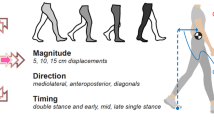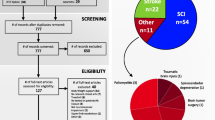Abstract
Gait analysis is relevant to a broad range of clinical applications in areas of orthopedics, neurosurgery, rehabilitation and the sports medicine. There are various methods available for capturing and analyzing the gait cycle. Most of gait analysis methods are computationally expensive and difficult to implement outside the laboratory environment. Inertial measurement units, IMUs are considered a promising alternative for the future of gait analysis. This study reports the results of a systematic validation procedure to validate the foot pitch angle measurement captured by an IMU against Vicon Optical Motion Capture System, considered the standard method of gait analysis. It represents the first phase of a research project which aims to objectively evaluate the ankle function and gait patterns of patients with dorsiflexion weakness (commonly called a “drop foot”) due to a L5 lumbar radiculopathy pre- and post-lumbar decompression surgery. The foot pitch angle of 381 gait cycles from 19 subjects walking trails on a flat surface have been recorded throughout the course of this study. Comparison of results indicates a mean correlation of 99.542% with a standard deviation of 0.834%. The maximum root mean square error of the foot pitch angle measured by the IMU compared with the Vicon Optical Motion Capture System was 3.738° and the maximum error in the same walking trail between two measurements was 9.927°. These results indicate the level of correlation between the two systems.










Similar content being viewed by others
References
Baker R. Gait analysis methods in rehabilitation. J Neuroeng Rehabil. 2006;3:4.
Tao W, Liu T, Zheng R, Feng H. Gait analysis using wearable sensors. Sensors (Basel). 2012;12(2):2255–83.
Cloete T, Scheffer C. Repeatability of an off-the-shelf, full body inertial motion capture system during clinical gait analysis. In: 2010 annual international conference on ieee engineering in medicine and biology society EMBC’10, p. 5125–5128; 2010.
Zhou H, Hu H. Human motion tracking for rehabilitation—a survey. Biomed Signal Process Control. 2008;3(1):1–18.
Moeslund TB, Krüger V. A survey of advances in vision-based human motion capture and analysis. Comput Vis Image Underst. 2006;104(2):90–126.
J. Cockcroft. An evaluation of inertial motion capture technology for use in the analysis and optimization of road cycling kinematics. no. March, 2011.
Simon SR. Quantification of human motion: gait analysis—benefits and limitations to its application to clinical problems. J Biomech. 2004;37(12):1869–80.
K. Tong, M.H. Granat. A practical gait analysis system using gyroscopes.pdf, vol. 21; 1999. p. 87–94.
Pappas IPI, Keller T, Mangold S, Popovic MR, Dietz V, Morari M. A reliable gyroscope-based gait-phase detection sensor embedded in a shoe insole. IEEE Sens J. 2004;4(2):268–74.
Auvinet B, et al. Reference data for normal subjects obtained with an accelerometric device. Gait Posture. 2002;16(2):124–34.
Aminian K, Najafi B, Büla C, Leyvraz PF, Robert P. Spatio-temporal parameters of gait measured by an ambulatory system using miniature gyroscopes. J Biomech. 2002;35(5):689–99.
Huang Y, Jirattigalachote W, Cutkosky MR, Zhu X, Shull PB. Novel foot progression angle algorithm estimation via foot-worn, magneto-inertial sensing. IEEE Trans Biomed Eng. 2016;63(11):2278–85.
Coley B, Najafi B, Paraschiv-Ionescu A, Aminian K. Stair climbing detection during daily physical activity using a miniature gyroscope. Gait Posture. 2005;22(4):287–94.
Mayagoitia RE, Nene AV, Veltink PH. Accelerometer and rate gyroscope measurement of kinematics: an inexpensive alternative to optical motion analysis systems. J Biomech. 2002;35(4):537–42.
Wu G, Ladin Z. The study of kinematic transients in locomotion using the integrated kinematic sensor. IEEE Trans Rehabil Eng. 1996;4(3):193–200.
Lau H, Tong K. The reliability of using accelerometer and gyroscope for gait event identification on persons with dropped foot. Gait Posture. 2008;27(2):248–57.
Fourati H. Heterogeneous data fusion algorithm for pedestrian navigation via foot-mounted inertial measurement unit and complementary filter. IEEE Trans Instrum Meas. 2015;64(1):221–9.
F. Woyano, S. Lee, S. Park. Evaluation and comparison of performance analysis of indoor inertial navigation system based on foot mounted IMU. In: International conference on advanced communication technology ICACT, vol. 2016–March; 2016. p. 792–798.
Li Q, Young M, Naing V, Donelan JM. Walking speed and slope estimation using shank-mounted inertial measurement units. 2009 IEEE Int Conf Rehabil Robot ICORR. 2009;2009:839–44.
Luinge HJ, Veltink PH, Baten CTM. Ambulatory measurement of arm orientation. J Biomech. 2007;40(1):78–85.
Van Den Noort JC, Kortier HG, Van Beek N, Veeger DHEJ, Veltink PH. Measuring 3D hand and finger kinematics—a comparison between inertial sensing and an opto-electronic marker system. PLoS ONE. 2016;11(11):1–16.
Curtin university. Motion Anlysis Lab, Facilities and Locations, school and departments; 2015. http://healthsciences.curtin.edu.au/schools-and-departments/physiotherapy-exercise-science/facilities/.
M. Windolf, N. Gö Tzen, M. Morlock. Systematic accuracy and precision analysis of video motion capturing systems—exemplified on the Vicon-460 system.
S.W. List. Using the Arduino Pro Mini 3. 3 V. p. 1–9.
R. Chokshi. Datasheet RS-MPU-6000A-00. p. 52, 2015.
A. Noureldin, T.B. Karamat, J. Georgy. Fundamentals of inertial navigation, satellite-based positioning and their integration, vol. 58, no. 12. Springer, Berlin, 2013.
Sharif Bidabadi S, Murray I, Lee G. The application of inertial measurements unit for the clinical evaluation and assessment of gait events. J Med Eng Technol. 2017;41:309–1902.
A. Kim, M. Golnaraghi. A quaternion-based orientation estimation algorithm using an inertial measurement unit. In: Position Location and Navigation Symposium, 2004, no. May 2004, p. 268–272.
Acknowledgements
We are grateful to The Kailis foundation group, ST John of God healthcare group, for the funding of this project.
Author information
Authors and Affiliations
Corresponding author
Ethics declarations
Ethical approval
This study involves Human subjects and the relevant ethical approvals obtained from Curtin University of Technology (Human Research Ethics Office): HR 12/2016 and St John of God healthcare group (HREC): 823.
Conflict of interest
The authors report no financial or other conflict of interest relevant to the subject of this article.
Rights and permissions
About this article
Cite this article
Sharif Bidabadi, S., Murray, I. & Lee, G.Y.F. Validation of foot pitch angle estimation using inertial measurement unit against marker-based optical 3D motion capture system. Biomed. Eng. Lett. 8, 283–290 (2018). https://doi.org/10.1007/s13534-018-0072-5
Received:
Revised:
Accepted:
Published:
Issue Date:
DOI: https://doi.org/10.1007/s13534-018-0072-5




